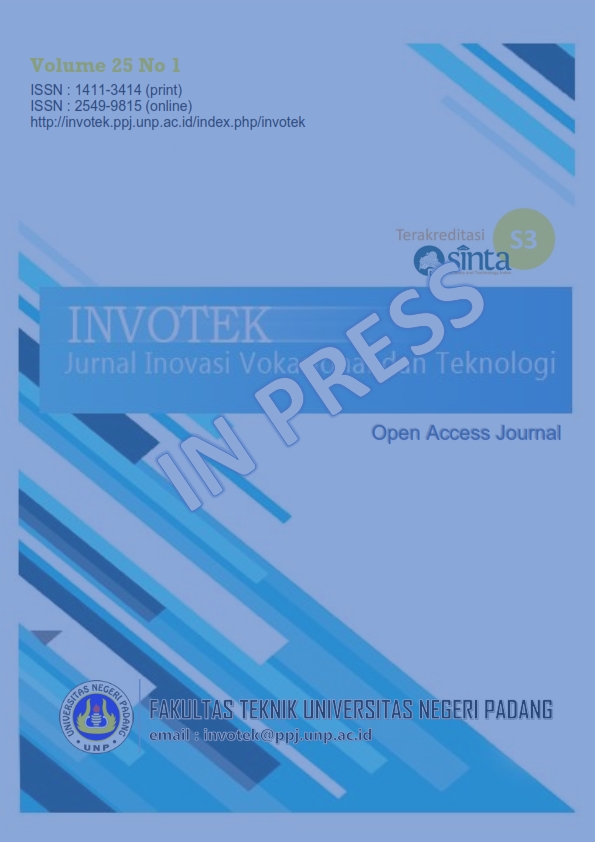Main Article Content
Abstract
This study examines the application of the Rescaled Adjusted Partial Sums (RAPS) method in validating traffic management risk analysis data in the category of large cities in Indonesia. The RAPS method is used to test the consistency and reliability of data that is the basis for traffic management risk analysis, so that it can ensure the validity of the risk assessment results. Data validation is very crucial in traffic management risk analysis to ensure the accuracy and reliability of the analysis results that are the basis for decision making. In order for the implementation of traffic management to be in accordance with the goals and objectives, traffic management analysis is needed to minimize the risk of failure of the implementation. Traffic management risk analysis in this study uses the Failure Modes, Effects and Criticality Analysis (FMECA) method. The data used are based on the results of filling out questionnaires from respondents, in the form of an assessment of three components, namely severity, occurrence, and detection for four indicators (road capacity, side obstacles, traffic conflicts, and traffic signs/markings) which have sub-indicators of the existing negative impacts. The data were validated to see the consistency of the data provided by respondents using the RAPS method. The results of the validation test using the RAPS method show that the data from the assessment of three components for four indicators that have sub-indicators of negative impacts are valid. And the test results show that the RAPS method is effective in identifying consistent and inconsistent data, thereby improving the quality of risk analysis data validation. With better validation, traffic management risk analysis can be carried out more precisely and efficiently.
Keywords
Article Details

This work is licensed under a Creative Commons Attribution 4.0 International License.
Copyright (c): Oktaviani Oktaviani, Purnawan Purnawan, Yossyafra Yossyafra, Bayu Martanto Adji (2025)References
- cnnindonesia.com, “MTI: Sistem Ganjil Genap Gagal Urai Kemacetan,” cnnindonesia.com. Accessed: Feb. 10, 2020. [Online]. Available: https://www.cnnindonesia.com/nasional/20160811100037-20-150638/mti-sistem-ganjil-genap-gagal-urai-kemacetan
- Kementrian Perhubungan, “Peraturan Menteri Perhubungan Republik Indonesia Nomor 96 Tentang Pedoman Pelaksanaan Kegiatan Manajemen dan Rekayasa Lalu Lintas,” 2015.
- PP No 32 tahun 2011, “Peraturan Pemerintah Republik Indonesia No 32 tahun 2011 tentang manajemen dan rekayasa, analisis dampak, serta manajemen kebutuhan lalu lintas,”
- R. Indonesia, Undang-Undang Republik Indonesia Nomor 22 Tahun 2009. 2009.
- P. M. Perhubungan, “No. KM 14 Tahun 2006 Tentang Manajemen dan Rekayasa Lalu Lintas di Jalan,” 2006. [Online]. Available: https://jdih.dephub.go.id/produk_hukum/view/UzAwZ01UUWdWRUZJVlU0Z01qQXdOZz09
- S. Malkhamah, Manajemen Lalu Lintas. Yogyakarta: Fakultas Teknik Universitas Gadjah Mada, 1996.
- A. Munawar, Manajemen Lalu Lintas Perkotaan. Yogyakarta: Beta Offset, 2009.
- Kemhan RI, “Peraturan Menteri Pertahanan Nomor 17 Tahun 2021 Tentang Penerapan Manajemen Risiko Di Lingkungan Kementerian Pertahanan Dan Tentara Nasional Indonesia,” no. 1460, 2021.
- S. T. Dwi Prasetyanto, Indra Noer Hamdhan, “Manajemen Risiko Keselamatan Lalu Lintas Indrastruktur Jalan Di Indonesia,” in Konferensi Nasional Teknik Sipil 12, Batam, 2018.
- A. S. Dalimunthe, M. Ihsan, R. A. Maolani, and D. Haryanto, “Analisis dan Pengukuran Risiko bagi Penumpang Kendaraan Umum Roda Dua di Jalan Raya Kota Jakarta dan Kabupaten Bekasi,” J. Bisnis, Manajemen, dan Keuangan., vol. 2, no. 3, pp. 611–628, 2021.
- Isoindonesiacenter.com, “Memahami ISO 39001:2012 – Sistem Manajemen Keselamatan Lalu Lintas.” [Online]. Available: https://isoindonesiacenter.com/memahami-iso-390012012-sistem-manajemen-keselamatan-lalu-lintas/
- Departemnt Of Defense and D. 20301 Washington, “Procedur for Performing a Failure Mode, Effects and Criticality Analysis,” 1980.
- G. Carmignani, “Supply chain and Quality Management: The Definition of a Standard to Implement a Process Management System in a Supply Chain.” Accessed: Feb. 10, 2020. [Online]. Available: https://www.researchgate.net/publication/242024833_Supply_chain_and_quality_management_The_definition_of_a_standard_to_implement_a_process_management_system_in_a_supply_chain
- Department of the US Army, “Failure Modes, Effects and Criticality Analysis (FMECA) for Command, Control, Computer, Intelligence, Surveillance and Reconnaissance (C4ISR) Facilities,” Facilities, no. September, p. 75, 2006.
- K. Alverbro, B. Nevhage, and R. Erdeniz, “Methods for Risk Analysis,” 2010, [Online]. Available: https://inis.iaea.org/records/e448m-2ny52
- D. Saraswati, I. A. Marie, and A. Witonohadi, “Power Transformer Failures Evaluation Using Failure Mode Effect and Criticality Analysis ( FMECA ) Method,” Asian J. Eng. Technol., vol. 02, no. 06, pp. 484–489, 2014, [Online]. Available: (www.ajouronline.com)
- A. Talon, D. Boisser, J. Hans, M. A. Lacasse, and J. Chorier, “FMECA and Management of Building Components,” 11Dbmc, pp. 1–9, 2008.
- P. R. Darmstadt et al., “Hazards Analysis and Failure Modes and Effects Criticality Analysis (FMECA) of Four Concept Vehicle Propulsion Systems,” NASA Tech. Reports Serv., no. June, 2019, [Online]. Available: http://www.sti.nasa.gov
- Marimin, “Teknik dan Aplikasi Pengambilan Keputusan Kriteria Majemuk,” no. May, 2004, doi: 10.13140/RG.2.1.3743.2800.
- Eriyanto and F. Syoyar, Riset Kebijakan Metode Penelitian Pascasarjana. Bogor: IPB PRESS, 2007.
- Buishand, “Some Methods For Testing The Homogeneity Of Rainfall Records,” J. Hydrol., vol. Vol 58, pp. 11–27, 1982.
- S. Harto, Analisis Hidrologi. Jakarta: Gramedia, 1993.
- Oktaviani, Purnawan, Yossyafra, and B. M. Adji, “Impact of traffic management implementation on road users,” AIP Conf. Proc., vol. 2599, 2023, doi: 10.1063/5.0115674.
- Departemen Kimpraswil, “PUPR No. Pd T 08 2004 B_Pedoman Penanganan Praktis Kemacetan Lalu Lintas di Jalan Perkotaan,” 2004.
- Bina Marga Direktorat Jendral,” Panduan. Kapasitas Jalan Indonesia., p. 68, 2023.
- bps.go.id, “Hasil Sensus Penduduk (SP2020) pada September 2020 mencatat jumlah penduduk sebesar 270,20 juta jiwa.,” bps.go.id. Accessed: Oct. 10, 2021. [Online]. Available: https://www.bps.go.id/id/pressrelease/2021/01/21/1854/hasil-sensus-penduduk-2020.html
